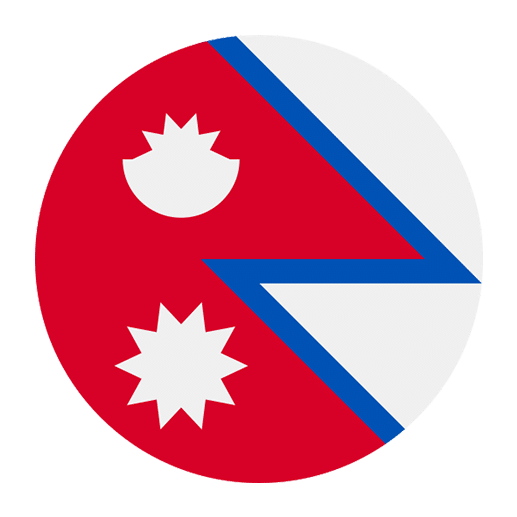Learning a new language can be both exciting and challenging, and Nepali is no exception. One of the fundamental aspects of mastering Nepali is understanding its verb conjugations. Verb conjugation is the process of changing a verb form to provide information about the action, such as tense, mood, voice, aspect, person, and number. In this comprehensive guide, we will delve into the intricacies of Nepali verb conjugation to help English speakers navigate this essential component of the language.
Introduction to Nepali Verb Conjugation
Nepali, an Indo-Aryan language, follows a relatively consistent pattern for verb conjugation. The language has a Subject-Object-Verb (SOV) sentence structure, which means the verb typically comes at the end of the sentence. Verbs in Nepali change form based on factors such as tense (past, present, future), aspect (simple, continuous, perfect), mood (indicative, imperative, subjunctive), and the subject’s gender, person, and number.
Basic Verb Structure
In Nepali, verbs are generally formed by adding suffixes to the root verb. For example, the root verb for “to eat” is “खानु” (khanu). The root verb remains constant while suffixes change based on tense, aspect, and the subject.
Example:
– Root verb: खानु (khanu) – to eat
– Present tense (first person singular): म खान्छु (ma khanchu) – I eat
– Past tense (third person singular): उसले खायो (usle khayo) – He/She ate
Tenses
Present Tense
The present tense in Nepali indicates an action that is currently ongoing or habitual. The suffixes for the present tense vary based on the subject’s number and person.
Examples:
– म खान्छु (ma khanchu) – I eat
– तिमी खान्छौ (timi khanchau) – You eat (informal)
– तपाईँ खानुहुन्छ (tapai khanuhunchha) – You eat (formal)
– ऊ खान्छ (u khanchha) – He/She eats
– हामी खान्छौं (hami khanchau) – We eat
– उनीहरु खान्छन् (uniharoo khanchhan) – They eat
Past Tense
The past tense indicates an action that has already occurred. Nepali uses different suffixes to denote the past tense based on the subject.
Examples:
– मैले खाएँ (maile khaye) – I ate
– तिमीले खायौ (timile khayau) – You ate (informal)
– तपाईँले खानुभयो (tapaile khanubhayo) – You ate (formal)
– उसले खायो (usle khayo) – He/She ate
– हामीले खायौं (hamile khayau) – We ate
– उनीहरुले खाए (uniharule khaye) – They ate
Future Tense
The future tense is used to indicate an action that will occur. The structure for future tense conjugation also changes based on the subject.
Examples:
– म खानेछु (ma khanechu) – I will eat
– तिमी खानेछौ (timi khanechhau) – You will eat (informal)
– तपाईँ खानेहुनेछ (tapai khanehunechha) – You will eat (formal)
– ऊ खानेछ (u khanechha) – He/She will eat
– हामी खानेछौं (hami khanechhau) – We will eat
– उनीहरु खानेछन् (uniharoo khanechhan) – They will eat
Aspects
Aspects in Nepali are used to provide more information about the nature of the action. The primary aspects are simple, continuous, and perfect.
Simple Aspect
The simple aspect refers to a basic form of the verb without any additional nuance. It is the default form in the present, past, and future tenses as described above.
Continuous Aspect
The continuous aspect indicates an ongoing action. It is formed by combining the root verb with a form of “रहेको” (rahai ko) for present continuous, “रहेको थियो” (rahai ko thiyo) for past continuous, and “रहेको हुनेछ” (rahai ko hunechha) for future continuous.
Examples:
– म खानिरहेको छु (ma khaniraheko chu) – I am eating
– तिमी खानिरहेको छौ (timi khaniraheko chhau) – You are eating (informal)
– उसले खानिरहेको थियो (usle khaniraheko thiyo) – He/She was eating
– हामी खानिरहेको हुनेछौं (hami khaniraheko hunechhau) – We will be eating
Perfect Aspect
The perfect aspect indicates a completed action. It is formed by combining the root verb with a form of “सकेको” (sakeko) for present perfect, “सकेको थियो” (sakeko thiyo) for past perfect, and “सकेको हुनेछ” (sakeko hunechha) for future perfect.
Examples:
– मैले खाइसकेको छु (maile khaisakeko chu) – I have eaten
– तिमीले खाइसकेको छौ (timile khaisakeko chhau) – You have eaten (informal)
– उसले खाइसकेको थियो (usle khaisakeko thiyo) – He/She had eaten
– हामीले खाइसकेको हुनेछौं (hamile khaisakeko hunechhau) – We will have eaten
Moods
Nepali verbs can express different moods, such as indicative, imperative, and subjunctive, which convey different levels of certainty, command, or hypothetical situations.
Indicative Mood
The indicative mood is used for statements of fact and reality. Most of the examples provided so far are in the indicative mood.
Examples:
– म खानेछु (ma khanechu) – I will eat (future indicative)
– तिमीले खायौ (timile khayau) – You ate (past indicative)
Imperative Mood
The imperative mood is used for commands or requests. The form changes based on the level of politeness.
Examples:
– खानुहोस् (khanu hos) – Please eat (formal)
– खा (kha) – Eat (informal)
Subjunctive Mood
The subjunctive mood expresses wishes, doubts, or hypothetical situations. It often uses forms like “भए” (bhaye) or “होस्” (hos).
Examples:
– यदि मैले खाएको भए (yadi maile khayeko bhaye) – If I had eaten
– म चाहन्छु कि तिमीले खाओस् (ma chahanchu ki timile khaos) – I want you to eat
Honorifics and Politeness
Nepali has a system of honorifics that reflects social hierarchy and respect. Verbs change form based on the level of politeness, especially when addressing elders or people in formal situations.
Examples:
– तपाईँ खानुहुन्छ (tapai khanuhunchha) – You eat (formal)
– तिमी खान्छौ (timi khanchau) – You eat (informal)
Verb Conjugation for Common Verbs
To further illustrate verb conjugation in Nepali, let’s look at some common verbs and their conjugated forms in different tenses and aspects.
Verb: हुनु (hunu) – to be
– Present: म छु (ma chu) – I am
– Past: म थिएँ (ma thie) – I was
– Future: म हुनेछु (ma hunechu) – I will be
– Present Continuous: म भइरहेको छु (ma hairaheko chu) – I am being
– Past Continuous: म भइरहेको थिएँ (ma hairaheko thie) – I was being
– Present Perfect: म भइसकेको छु (ma bhaisakeko chu) – I have been
– Past Perfect: म भइसकेको थिएँ (ma bhaisakeko thie) – I had been
Verb: जानु (janu) – to go
– Present: म जान्छु (ma janchu) – I go
– Past: म गएँ (ma gae) – I went
– Future: म जानेछु (ma janechu) – I will go
– Present Continuous: म जाँदैछु (ma jandaichu) – I am going
– Past Continuous: म जाँदै थिएँ (ma jandaithie) – I was going
– Present Perfect: म गइसकेको छु (ma gaisakeko chu) – I have gone
– Past Perfect: म गइसकेको थिएँ (ma gaisakeko thie) – I had gone
Verb: बोल्नु (bolnu) – to speak
– Present: म बोल्छु (ma bolchu) – I speak
– Past: म बोलेँ (ma bole) – I spoke
– Future: म बोल्नेछु (ma bolnechu) – I will speak
– Present Continuous: म बोल्दैछु (ma boldaichu) – I am speaking
– Past Continuous: म बोल्दै थिएँ (ma boldaithie) – I was speaking
– Present Perfect: म बोलिसकेको छु (ma bolisakeko chu) – I have spoken
– Past Perfect: म बोलिसकेको थिएँ (ma bolisakeko thie) – I had spoken
Tips for Mastering Nepali Verb Conjugation
Learning verb conjugation can be daunting, but here are some tips to help you master it:
Practice Regularly: Consistency is key. Practice conjugating verbs daily to become familiar with the patterns.
Use Flashcards: Create flashcards for different tenses and aspects. This will help you memorize the conjugations faster.
Engage in Conversations: Practice speaking with native Nepali speakers. Real-life conversations will help reinforce your understanding.
Watch Nepali Media: Listening to Nepali songs, watching movies, or following Nepali news can expose you to various verb forms in context.
Keep a Journal: Write daily entries in Nepali. This will help you practice writing and conjugating verbs in different tenses and aspects.
Conclusion
Mastering Nepali verb conjugation is a critical step in becoming proficient in the language. Understanding the different tenses, aspects, moods, and levels of politeness will greatly enhance your ability to communicate effectively in Nepali. Regular practice, exposure to the language, and engaging with native speakers will accelerate your learning process. With dedication and perseverance, you will soon find yourself confidently using Nepali verbs in various contexts. Happy learning!

